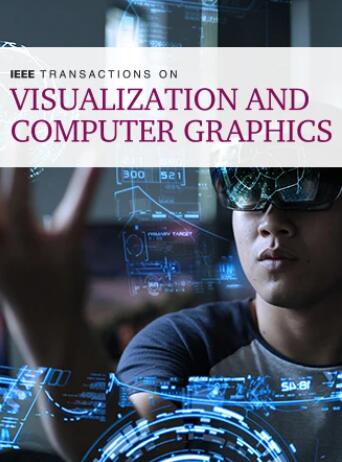Adaptive 3D Mesh Steganography Based on Feature-Preserving Distortion
IF 6.5
1区 计算机科学
Q1 COMPUTER SCIENCE, SOFTWARE ENGINEERING
IEEE Transactions on Visualization and Computer Graphics
Pub Date : 2022-09-19
DOI:10.48550/arXiv.2209.08884
引用次数: 1
Abstract
Current 3D mesh steganography algorithms relying on geometric modification are prone to detection by steganalyzers. In traditional steganography, adaptive steganography has proven to be an efficient means of enhancing steganography security. Taking inspiration from this, we propose a highly adaptive embedding algorithm, guided by the principle of minimizing a carefully crafted distortion through efficient steganography codes. Specifically, we tailor a payload-limited embedding optimization problem for 3D settings and devise a feature-preserving distortion (FPD) to measure the impact of message embedding. The distortion takes on an additive form and is defined as a weighted difference of the effective steganalytic subfeatures utilized by the current 3D steganalyzers. With practicality in mind, we refine the distortion to enhance robustness and computational efficiency. By minimizing the FPD, our algorithm can preserve mesh features to a considerable extent, including steganalytic and geometric features, while achieving a high embedding capacity. During the practical embedding phase, we employ the Q-layered syndrome trellis code (STC). However, calculating the bit modification probability (BMP) for each layer of the Q-layered STC, given the variation of Q, can be cumbersome. To address this issue, we design a universal and automatic approach for the BMP calculation. The experimental results demonstrate that our algorithm achieves state-of-the-art performance in countering 3D steganalysis.基于特征保持失真的自适应三维网格隐写
目前基于几何修改的三维网格隐写算法容易被隐写分析器检测到。在传统的隐写术中,自适应隐写术已被证明是提高隐写安全性的有效手段。受此启发,我们提出了一种高度自适应的嵌入算法,其原则是通过有效的隐写代码最小化精心制作的失真。具体来说,我们为3D设置定制了一个有效载荷限制的嵌入优化问题,并设计了一个特征保持失真(FPD)来测量消息嵌入的影响。失真采用加性形式,定义为当前三维隐写分析仪所利用的有效隐写子特征的加权差。考虑到实用性,我们对畸变进行了细化,以提高鲁棒性和计算效率。通过最小化FPD,我们的算法可以在很大程度上保留网格特征,包括隐写分析和几何特征,同时实现高嵌入容量。在实际嵌入阶段,我们采用了q层综合征网格码(STC)。然而,考虑到Q的变化,计算Q层STC的每层的比特修改概率(BMP)可能会很麻烦。为了解决这一问题,我们设计了一种通用的BMP自动计算方法。实验结果表明,我们的算法在对抗3D隐写分析方面达到了最先进的性能。
本文章由计算机程序翻译,如有差异,请以英文原文为准。
求助全文
约1分钟内获得全文
求助全文
来源期刊

IEEE Transactions on Visualization and Computer Graphics
工程技术-计算机:软件工程
CiteScore
10.40
自引率
19.20%
发文量
946
审稿时长
4.5 months
期刊介绍:
TVCG is a scholarly, archival journal published monthly. Its Editorial Board strives to publish papers that present important research results and state-of-the-art seminal papers in computer graphics, visualization, and virtual reality. Specific topics include, but are not limited to: rendering technologies; geometric modeling and processing; shape analysis; graphics hardware; animation and simulation; perception, interaction and user interfaces; haptics; computational photography; high-dynamic range imaging and display; user studies and evaluation; biomedical visualization; volume visualization and graphics; visual analytics for machine learning; topology-based visualization; visual programming and software visualization; visualization in data science; virtual reality, augmented reality and mixed reality; advanced display technology, (e.g., 3D, immersive and multi-modal displays); applications of computer graphics and visualization.
 求助内容:
求助内容: 应助结果提醒方式:
应助结果提醒方式:


